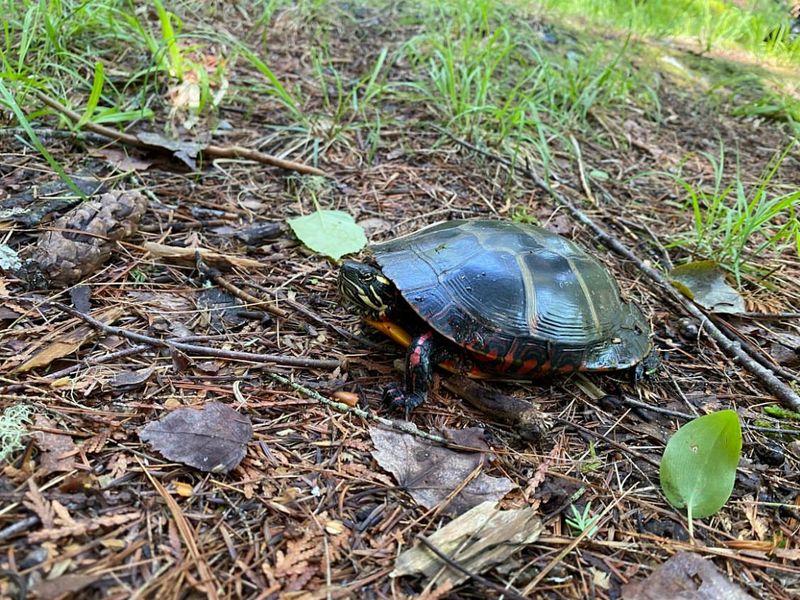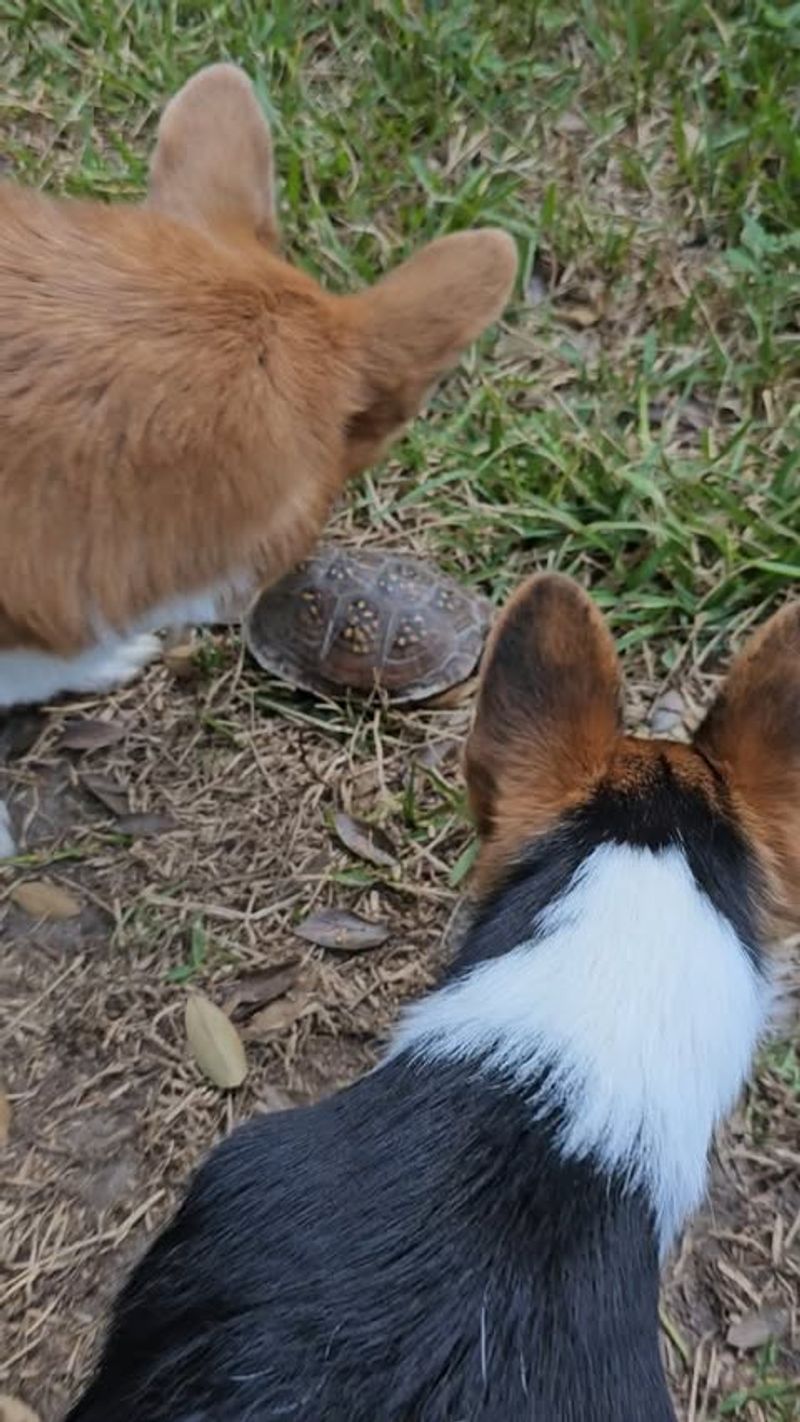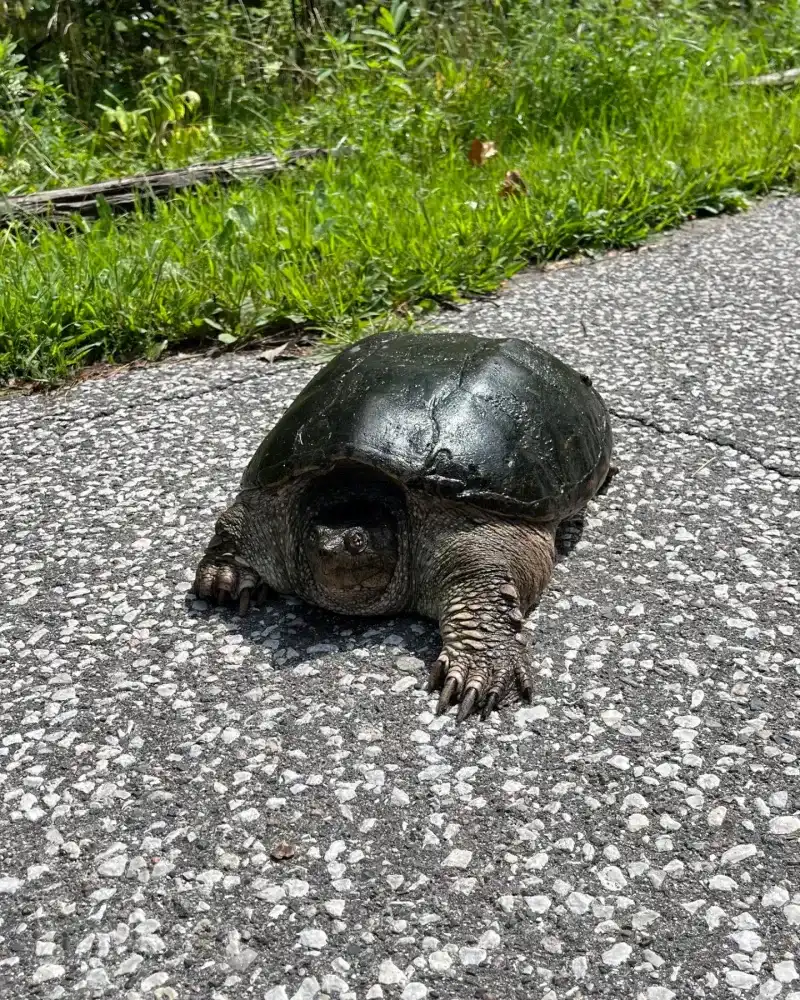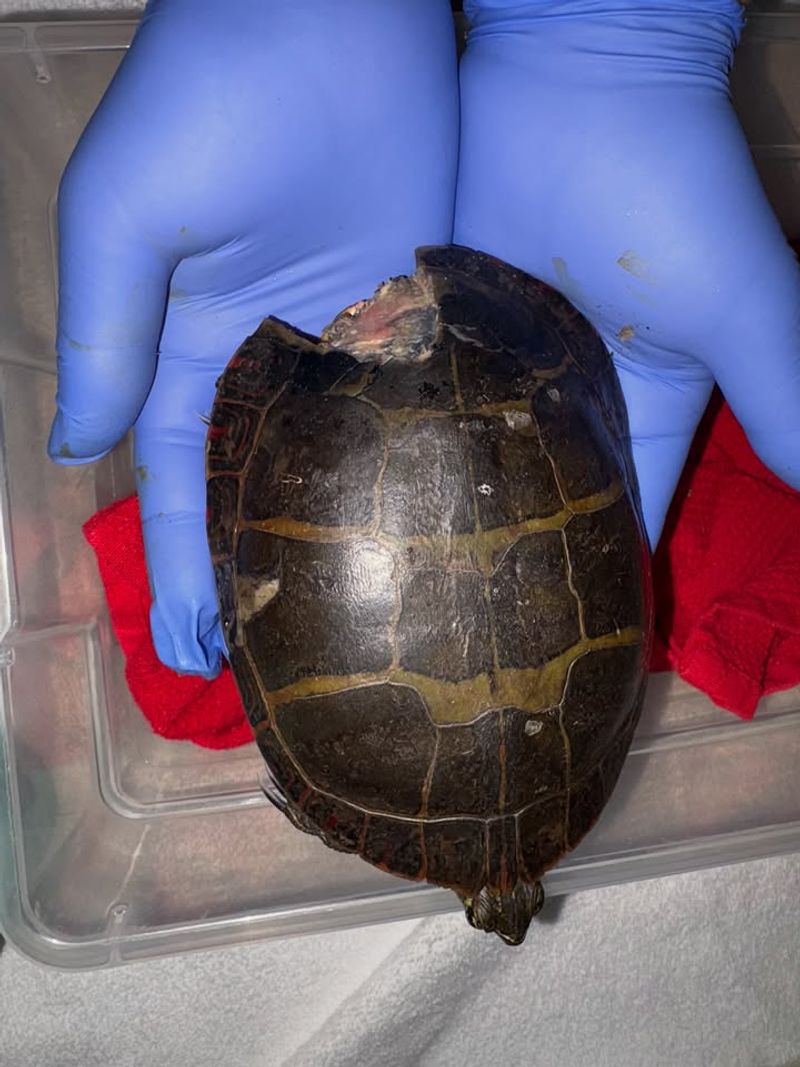Finding a turtle wandering through your Michigan yard can be a delightful surprise, but it also comes with responsibility. These slow-moving reptiles often show up during nesting season or while searching for water and food.
Knowing how to respond properly helps protect both the turtle and your property. Whether it’s a painted turtle or a snapping turtle, understanding what to do next makes all the difference.
1. Observe From A Safe Distance First
Before you rush over, take a moment to watch the turtle from where you stand. Many species can bite or scratch if they feel threatened, especially snapping turtles.
Michigan is home to ten native turtle species, and each behaves differently when approached. Give the animal space so you can identify what kind it is without causing stress.
Watching quietly also helps you understand where the turtle is headed, which can inform your next steps.
2. Identify The Species If Possible
Knowing what type of turtle you’re dealing with is incredibly helpful. Painted turtles have colorful markings on their heads and legs, while snapping turtles feature large heads and long tails.
Box turtles have high-domed shells and can close up completely. Michigan wildlife guides or online resources can help you identify the species quickly.
Some turtles are protected by state law, so proper identification ensures you handle the situation correctly and legally.
3. Keep Pets And Children Away
Curious dogs and excited kids might see a turtle as a new toy, but interactions can end badly for everyone involved. Snapping turtles can deliver powerful bites that cause serious injury.
Even smaller turtles carry bacteria like salmonella that can make people sick. Keep your family and pets at a comfortable distance while you figure out the best course of action.
Teaching children to respect wildlife from afar creates lifelong conservation values.
4. Avoid Relocating The Turtle Unless Necessary
Turtles usually know where they’re going, whether that’s to a pond, nesting site, or feeding area. Moving them can disrupt important behaviors like egg-laying or returning to familiar territory.
Female turtles in Michigan often travel surprising distances to find the perfect nesting spot in late spring. Unless the turtle is in immediate danger from traffic or equipment, let it continue on its journey.
Nature works best when we don’t interfere unnecessarily.
5. Help It Cross Safely If Near A Road
Roads pose deadly threats to turtles, and many Michigan residents encounter them crossing driveways or neighborhood streets. If you need to help, always move the turtle in the direction it was already heading.
Pick up smaller turtles by grasping both sides of the shell near the middle. For snapping turtles, use a shovel or car mat to slide them across, keeping your hands well away from the head.
Quick action saves lives while respecting the animal’s intended path.
6. Provide Water Access If It Seems Lost
Sometimes turtles wander far from water sources and become disoriented, especially during hot Michigan summers. If the turtle appears lethargic or has been sitting in one spot for hours, it might be dehydrated.
Place a shallow dish of water nearby so it can drink or soak without risk of drowning. Avoid forcing water on the animal or submerging it completely.
This simple gesture can give a struggling turtle the boost it needs to continue its journey safely.
7. Contact Wildlife Experts If Injured
Turtles with cracked shells, visible wounds, or obvious injuries need professional care immediately. Michigan has licensed wildlife rehabilitators trained to treat reptiles properly.
Your local Department of Natural Resources office can provide contact information for nearby experts. Never attempt to treat injuries yourself, as improper care can worsen the situation.
Place the injured turtle in a ventilated box with a damp towel and transport it carefully to the recommended facility as soon as possible.
8. Create A Turtle-Friendly Habitat Long-Term
Once you’ve encountered a turtle, consider making your yard more welcoming for future visits. Native plants, shallow water features, and chemical-free lawns attract turtles and other beneficial wildlife.
Leaving some areas wild with leaf litter and logs provides shelter and nesting opportunities. Michigan homeowners who embrace natural landscaping often enjoy regular visits from these ancient reptiles.
Your yard becomes part of a larger conservation effort that supports local ecosystems beautifully.









